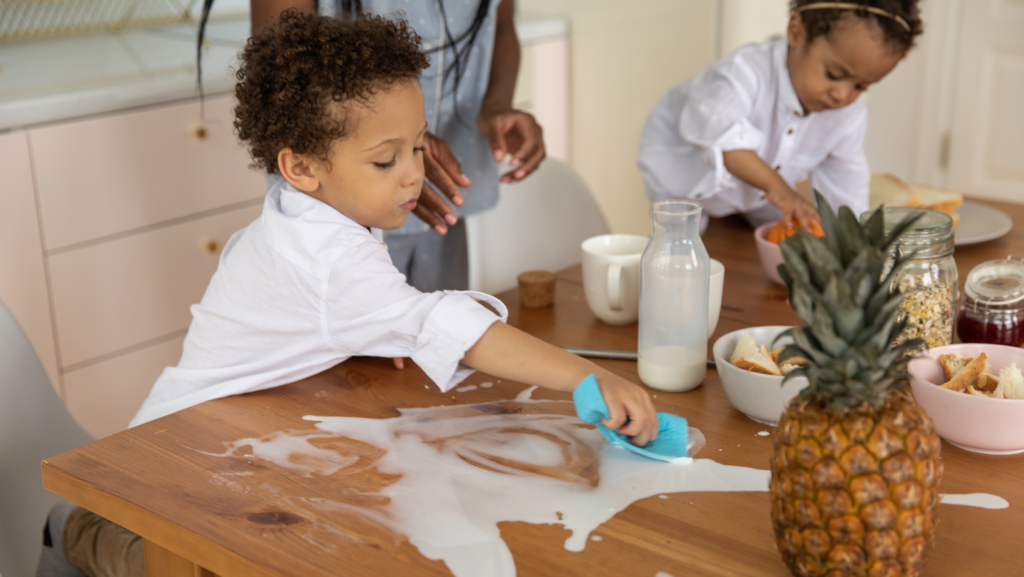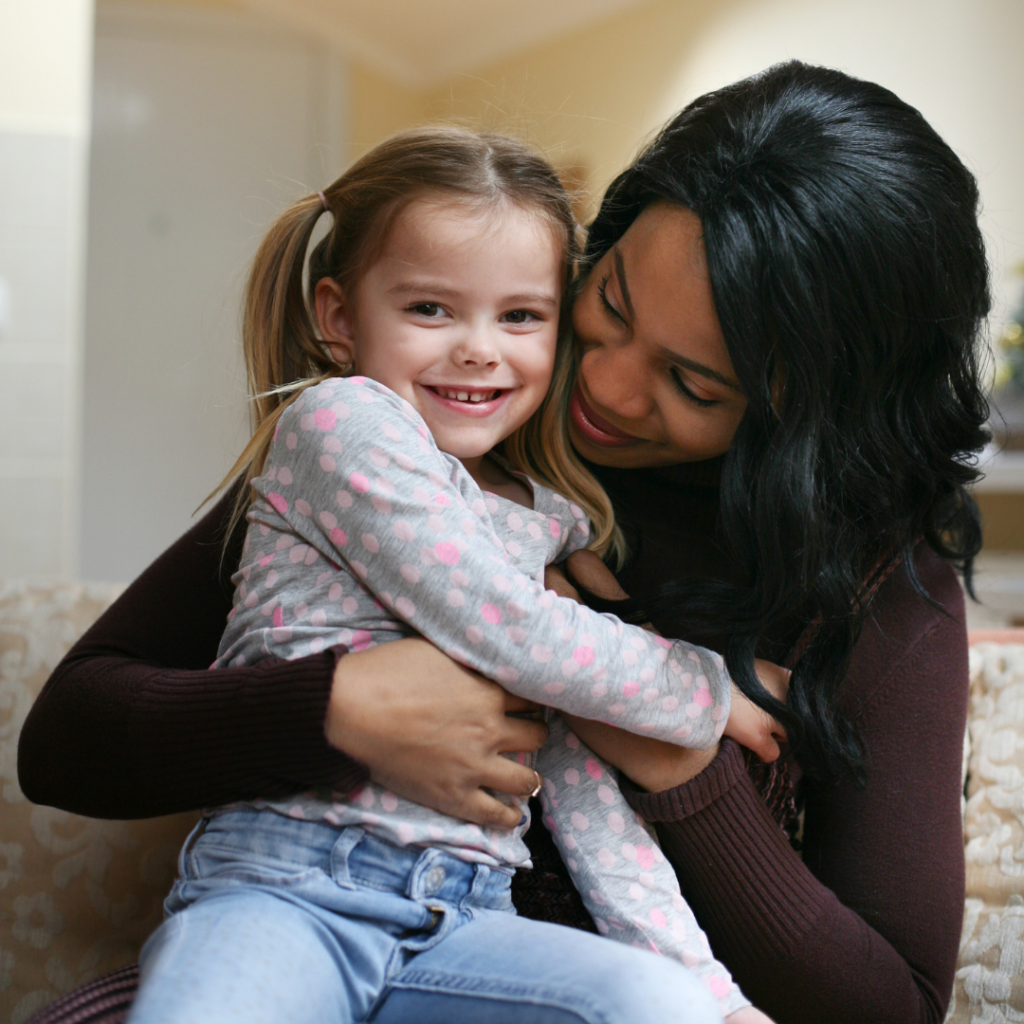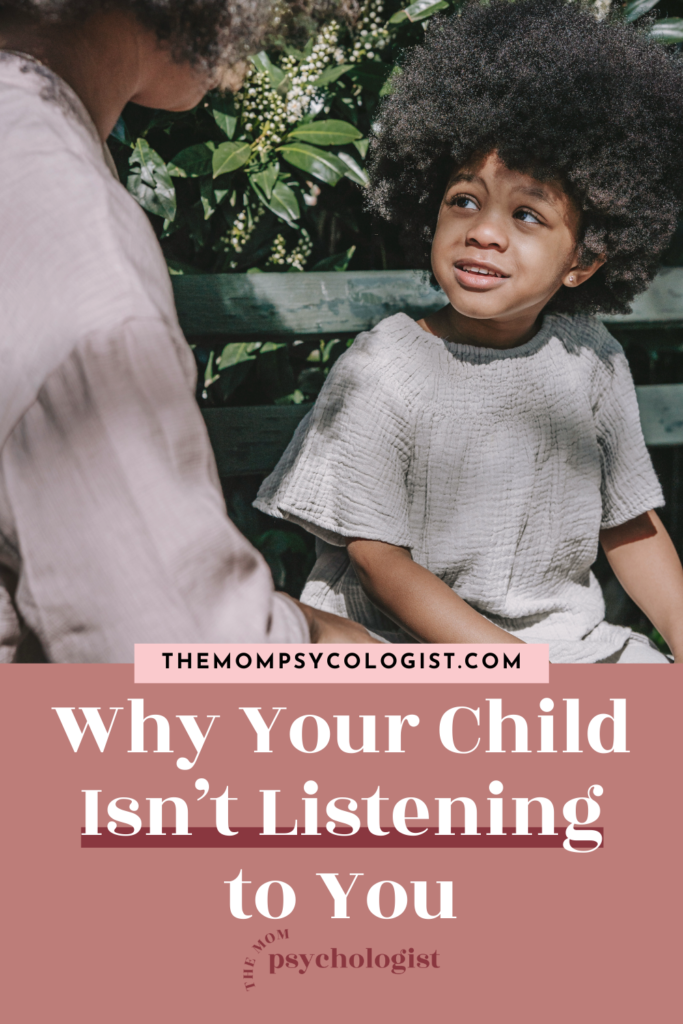watch now!
A place where I discuss all things related to toddlers and motherhood!
Subscribe to my Youtube channel
As a clinical psychologist, published author, and mother to two cheeky young children, I get it. I’ve spent YEARS researching and filtering through the noise online, so you don’t have to.
PARENTING TIPS
POTTY TRAINING
ANTIRACISM
PLAY
Blog Topics
SIBLING RIVALRY
SCREEN TIME
TANTRUMS
DISCIPLINE
Hi I'm Dr. Jazmine
It’s the Way You Say It: Why Your Child Isn’t Listening to You
topics:

If you clicked through to this blog, you’re probably struggling with defiance and your child not listening to you.
Do you give your child instructions, and they laugh in your face? Maybe they run away thinking it’s a game. Maybe they tune you out and do the exact opposite of what you want them to do, and it seems to go in one ear and out the other.
It all comes down to the way you say it.
To get your child to listen to you, make sure your instructions are clear, simple, and easy to follow.
Because here’s the thing: We’re all guilty of rattling off, “No. Stop. Quit. Don’t do that.” We focus on the misbehavior and tell them to stop, but it’s not effective.
What I want to help you do is you get in the habit of setting very clear instructions. If your child is struggling with following your instructions, you need to take a step back and say, “I need my child to do something different at this moment. How can I make sure my instructions are clear and easy to understand?”


What I do in my practice when working with parents is I walk through the book No, David! And this poor little boy. All-day long, he’s doing things he shouldn’t be doing or that his parents would rather not have him do. And his mom is going, “No, David. No!”
So let’s see if we can give David some clearer instructions to help him become a better listener.
The book starts with David standing on a chair trying to get his cookie. And instead of, “No, David, stop,” we would say, “David, baby, please sit on the chair or please put your feet on the floor.” These are very clear instructions. There’s no confusion about what we need him to do.

On the next page, David has been having fun outside, and now he’s tracking dirt, mud, and leaves in the house. So instead of, “No, David, no.” We would say, “David, baby, please turn around and walk back outside so I can take off your shoes.” Or, “Please sit down right there so I can take off your shoes.” Very clear.
Now David’s in the bathtub. Mr. Pirate is having fun with his shark, but he’s dripping water all over the floor. Instead of saying, “No, no, David,” we would say, “David, baby, please keep the water in the bathtub or please turn off the faucet. There’s too much water.” Again, very clear instructions.
But what if your child is not listening when it’s an unsafe behavior?
David is now running outside and running away from his mom, which is unsafe. But if your child is doing unsafe behaviors, go back to your instincts to keep them safe. So you might say, “Come back here.” But you can also say, “David, baby, please stop where you are, turn around and walk back to me.” And that’s very clear.
Now, I totally get it if they’re doing something unsafe and you need a resort to “Nos.” So I would say save your “Nos” for unsafe behavior.

Because here’s the thing, kids burn out on “No,” “Don’t,” “Stop,” and “Quit.” They burn out on it, and they tune it out. So instead, save those for when you really need your child to listen at that moment, and their safety is on the line.

Let’s practice giving more clear, simple instructions to trigger better listening from your child, or in this case, David.
In the next part of the book, David is banging on the pots and pans. He’s having so much fun. But you’re like, “David, baby, woo, it’s hurting my ears.” You could say, “David, please go to your room and bang on the pots.” Or, “Please go outside and do that,” or, “Please be gentle with these pots.” You could give him something else he can bang that’s a bit quieter. You always have some options on how you’ll approach the situation.
But saying, “Be quiet,” is too vague. What does that mean? Quiet can mean different things for different people. In our adult brain, we know what that means. But for little kids, they’re like, “I don’t know.” We don’t want our kids getting confused.
Now it’s dinnertime, and David’s at the table. And instead of eating his dinner, he’s playing with his food. So you say, “David, baby, please put your food on the plate,” or, “Please eat your food.” “It’s dinnertime, please start eating your food,” instead of, “Don’t play with your food.”
On the next page, he’s making some progress. He has the food in his mouth, but now his mouth is wide open. So instead of, “Stop, David, that’s enough,” we would say, “David, baby, please chew with your mouth closed. Please eat your food.”
Now David is getting ready for bed, and he’s jumping on the bed, which is a big one. It’s a big one on what to do and how to handle situations where your kid loves to jump off tables, jump on the couch, jump on the bed and you’re like, “Ah!”
So for this one, instead of, “Settle down,” which is vague. What does settle down mean? That could be open for interpretation. Say instead, “David, baby, please sit on the bed,” or, “Please stand on the floor,” or, “Please jump on the floor.”


You can choose to selectively ignore certain behaviors to change them.
On another page, David is picking his nose. Now, for some of these behaviors, I would err on the side of ignoring. This behavior might be one I would ignore.
But if you need him to stop, instead of “Stop that,” say, “Please remove your finger from your nose,” or, “Please take your finger out of your nose.”
Here’s the big one: How to get your child to listen so they clean up their toys!
David is now in his room, and it’s a mess. The TV is on, and Mom’s yelling, “Put your toys away.” That’s too overwhelming for kids. Where do they even begin?
So, my first tip, when you need your child to listen to you, it’s very important that you limit distractions.
My first go-to would be, “Okay, we need to turn this TV off. TV’s got to go.” Because that’s going to distract him from cleaning up. You want to limit the distractions when you need your child to listen to you.
So that might be music, that might be the TV, the tablet, whatever they’re doing, you need to limit that distraction and then focus on cleaning up.
Then you would go one by one through all the things you need him to do. So it’s not, “Pick up the toys.” It’s, “Please put your checker game back in the box,” “Please put your ball in the toy bin,” “Please put your book on the bookshelf.”
Be very specific about what you need them to do and where you need that toy to go, especially for toddlers. If your child is a little older, they’re probably used to cleaning up, and they don’t need as much guidance. But if your child struggles with cleanup, then you want to break it down for them and do it one instruction at a time.
Keep it fun. Keep it positive – “Yay, good job!” Make it silly. Make it a game if you want to. You can get creative.
Now we see David is about to play baseball in the house and mess up everything. He’s about to break the vase. So instead of, “Not in the house, David.” You should say, “Please go outside, David, and play that outside,” or, “Please give that to me,” or, “Please put that down. We’ll do that tomorrow.”


It is important to be mindful of the messages you are sending to your kids when working on their listening.
The book ends with David feeling so sad. He needs a hug because all day long he’s been hearing, “No, David. Stop, David. Quit, David.”
Think about it if this was you. If you were at work and all day long you heard from your boss and coworkers what a horrible job you were doing, all the things you were messing up, how would you feel? You would feel like, “Dang, I can’t do anything right. Why should I even try? What is it?”
That’s how your child feels when they get these messages all day long that they’re not doing the right thing. So it’s about guiding your child, walking them through this process, and keeping your instructions clear.
If you need a deeper understanding of how to get your child to listen and handle other misbehaviors, I have a free workshop, How to Get Your Kids to Listen Without Yelling, where we work through discipline and setting consequences with intention and respect.
Rooting for you,
Dr. Jazmine
Love this? Don’t lose it! Click below and save it to your Pinterest!

Leave a Reply Cancel reply
Copyright The Mom Psychologist® 2025
grab my free script pack!
explore
work with me
information
About
Blog
YouTube
Podcast
TMP University (Coaching)
Privacy Policy
Terms of Use
Product Disclaimer
Contact
TMP Times (Newsletter)